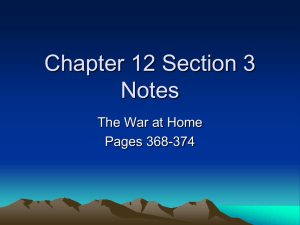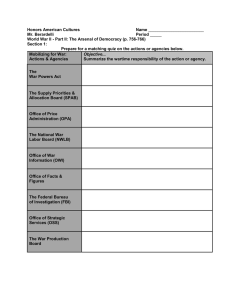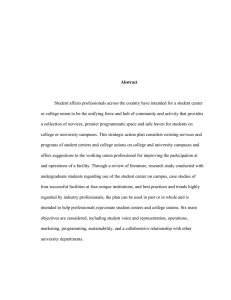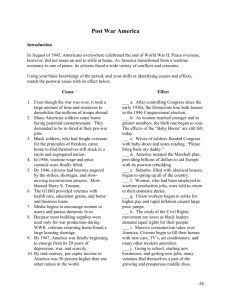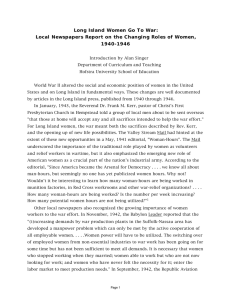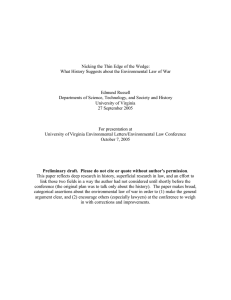WORLD WAR II: CHAPTER 25.2 GRQS - ARSENAL OF DEMOCRACY...
advertisement
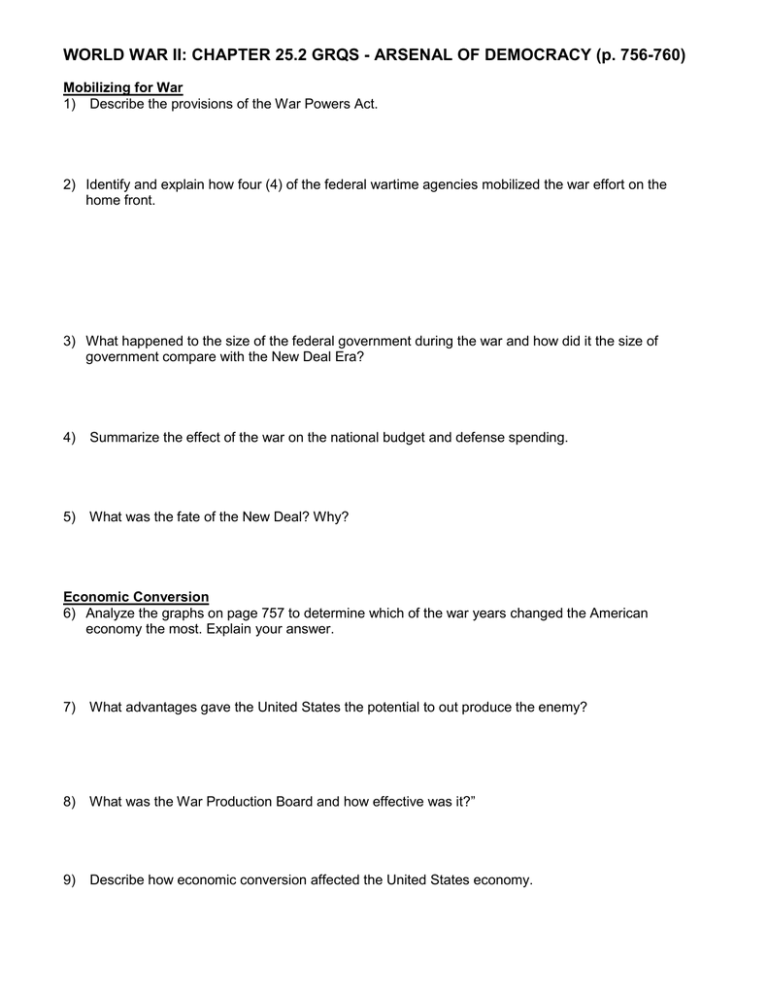
WORLD WAR II: CHAPTER 25.2 GRQS - ARSENAL OF DEMOCRACY (p. 756-760) Mobilizing for War 1) Describe the provisions of the War Powers Act. 2) Identify and explain how four (4) of the federal wartime agencies mobilized the war effort on the home front. 3) What happened to the size of the federal government during the war and how did it the size of government compare with the New Deal Era? 4) Summarize the effect of the war on the national budget and defense spending. 5) What was the fate of the New Deal? Why? Economic Conversion 6) Analyze the graphs on page 757 to determine which of the war years changed the American economy the most. Explain your answer. 7) What advantages gave the United States the potential to out produce the enemy? 8) What was the War Production Board and how effective was it?” 9) Describe how economic conversion affected the United States economy. 10) Describe how defense production affected the various geographic regions of the country. 11) What effect did the economic conversion have on small business and small farms? New Workers 12) What groups of people experienced new employment opportunities as a result the war effort? 13) Describe how the employment opportunities for females changed and challenged the existing stereotypes. 14) Regarding wartime employment, what dual message was being communicated to women by the government? 15) Identify: Rosie the Riveter - Wartime Strikes 16) Despite a 50% increase in workers’ wages, what economic factors compromised the prosperity of American workers? 17) How did the United States entry into World War II affect the policy of the larger labor unions? 18) How did the unions benefit from the policies of the National War Labor Board? 19) What was a “hate strike” and how effective was this tactic? 20) How did the size, gender and racial make-up of labor unions change during the war years?

